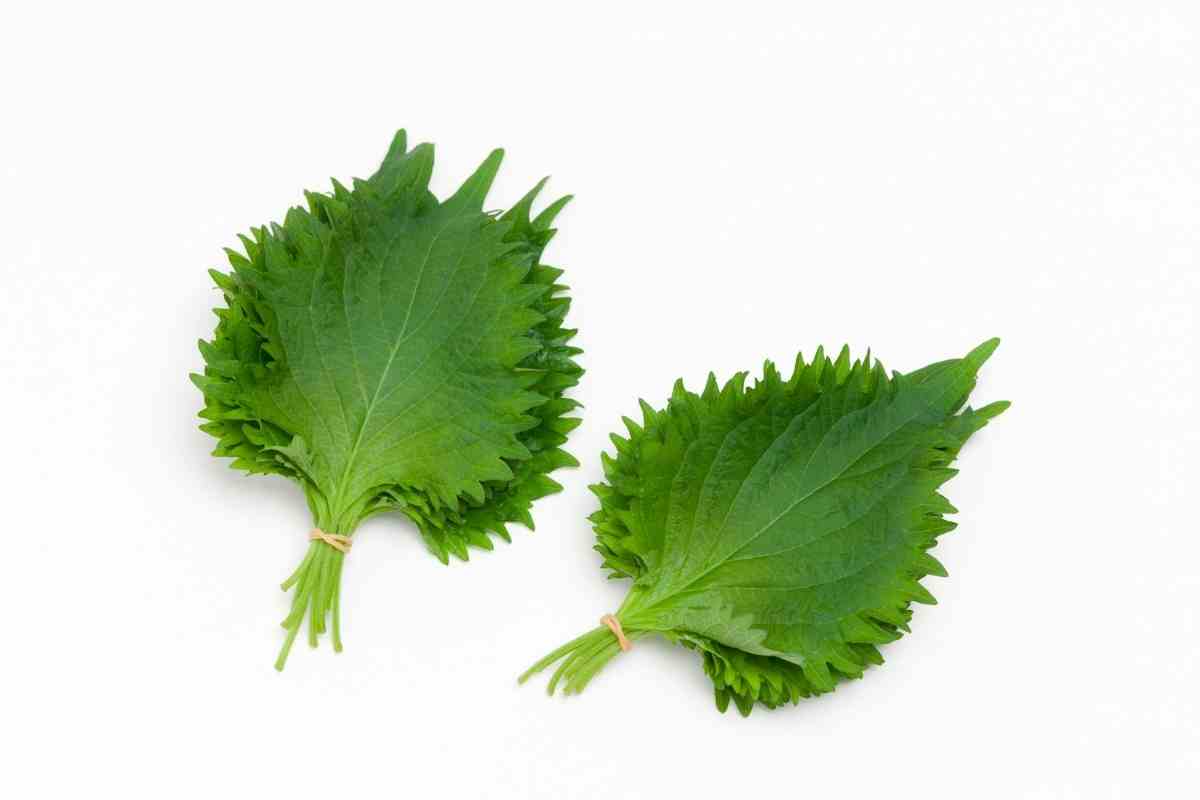If you’re pretty adept in the kitchen then we’d assume that you like to grow your own fresh herbs.
While lots of Americans are busy growing your typical herbs like basil, oregano, lavender and the like, we think it’s a good idea to think outside the box.
If you’ve ever wanted to grow something a little more exotic then you may have wondered how to grow korean perilla leaves.
Since it’s not easy to get your hands on good quality perilla leaves outside of Korea, it helps if you can grow your own.
It’s super easy to do and gives you a brand new ingredient for your cooking adventures.
What to Expect? In this ultimate guide to growing Korean perilla leaves, we’ll tell you everything you need to know to go from seed to plant.
What Are Korean Perilla Leaves?
The perilla seed plant produces perilla leaves which, in Korean, are known as Kkaennip.
This is a plant that comes from the mint family but it is native to Asia so it’s hard to come by in the United States and other parts of the world.
You will find that there are two different types of perilla leaves.
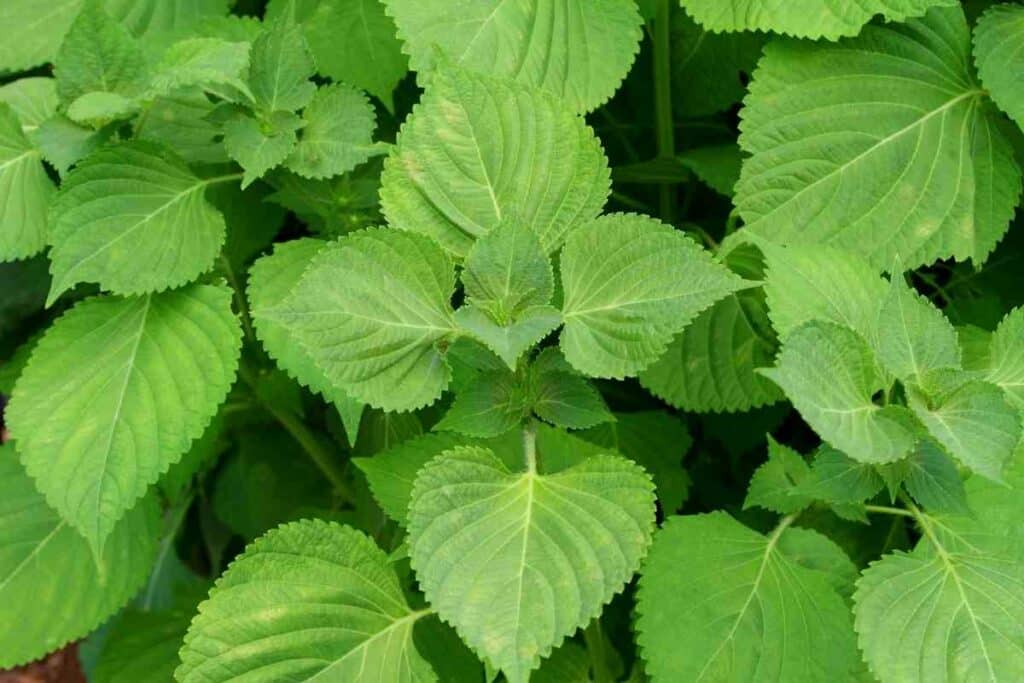
One features a purple hued underside while the others don’t. In any case, the perilla leaf has a serrated edge and the texture is a little fuzzy to the touch.
You might sometimes hear people calling perilla leaves, sesame leaves but it’s important to keep in mind that they have nothing to do with the sesame plant.
In Korea, these leaves are used as a cooking herb but many chefs also use them as a type of vegetable so they’re pretty versatile.
Planting Perilla Leaves From Seeds
The chances of you getting your hands on a sapling perilla seed plant in the USA are very low so this is something that you’ll have to grow from the seed.
But don’t worry, it’s not as scary as it sounds and if you’ve never grown from seed before, we will tell you everything you need to know.
Firstly, it’s important to find a good supplier for your seeds. If you go to a Korean store, you will likely be able to get some very good quality seeds.
However, if there isn’t one close to you, there are plenty of reputable online suppliers.
Heads Up! Whatever you decide to do, make sure that you do not confuse the seeds with Japanese shiso, as while they are often mixed up, they do not have the same taste and the leaves look different.
If you are harvesting your perilla seeds from a plant you already have then you must make sure to use them quickly as they do not store very well.
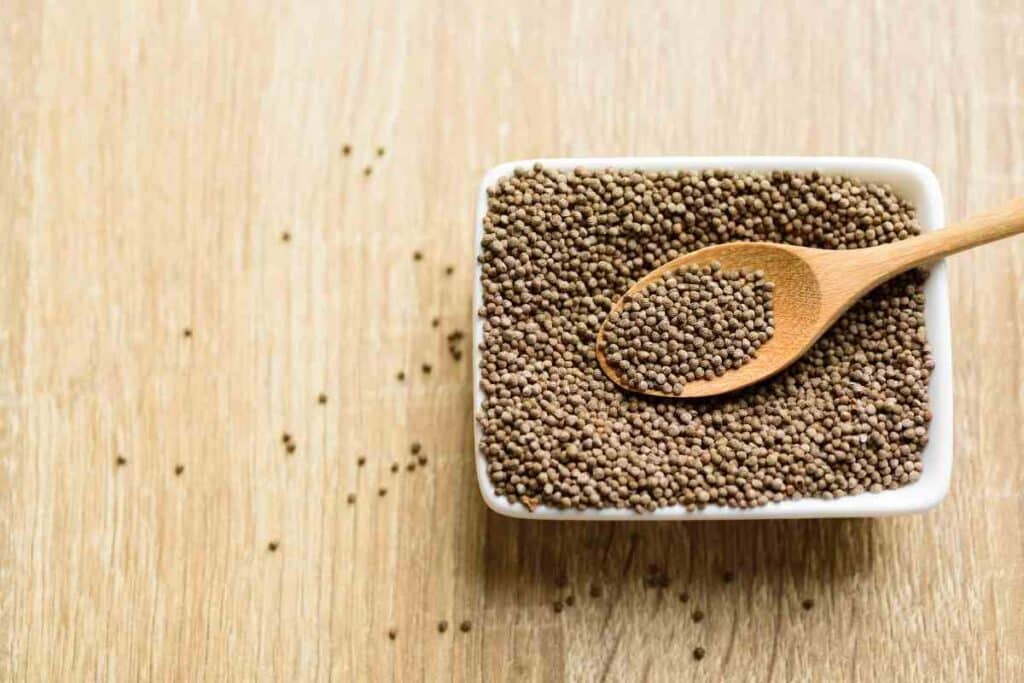
Going to a supplier is usually the best option.
Provided that the conditions are right, it is entirely possible to sow the perilla seeds outdoors.
However, if things aren’t quite stable enough, we would recommend growing indoors for the best success. If the outdoor temperature drops below around 45ºF at night, outdoor growing won’t be suitable.
Best Time to Plant Seeds
We would suggest planting your perilla seeds between March and May with April being the optimum time.
Keep in mind that the seeds may take up to 21 days to germinate and that is provided that the temperature stays above 70ºF.
If you’re growing seeds indoors then it’s largely recommended to plant four to six weeks before the last spring frost as this will allow you to transplant seedlings when the growing season begins.
Before you plant the seeds, you will need to soak them in water for around 24 hours. This ensures that germination will be as quick as possible.
Once this 24 hour period is up, you can then pop the seeds into a 25cm container or directly into the ground, again, what you choose will depend on the conditions.
Make sure you plant the seeds at least a quarter of an inch into the soil and cover them well but lightly.
If you are planting indoors then you will need to make sure that you use grow lights in order to ensure the seeds have enough light.
Once you have your seedlings, you might wish to move them from their containers into the garden.
When Doing This – You must make sure that there is at least ten to twelve inches between plants.
The soils should be moist but don’t go over the top as these plants are prone to fungal diseases which can be encouraged when the soil is too wet.
But we will go into more detail on watering later on.
What Are The Best Conditions For Korean Perilla Leaves?
If you want the greatest success when growing Korean perilla leaves, then you will need to make sure that you provide the best conditions.
The great thing about these plants is that they are quite tolerant to a variety of environments.
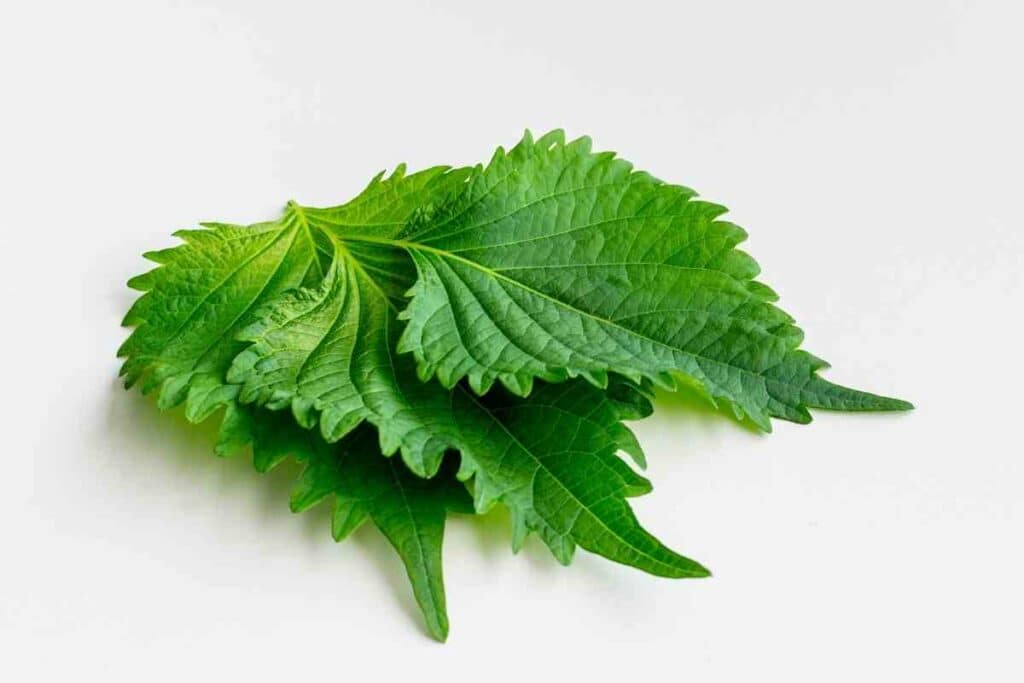
As we mentioned earlier, you will need to make sure that the temperature is consistent as this is a warm weather plant.
You will find that the perilla seed plant grows best in zones 2 to 11 but since it is native to Himalayan regions, it won’t fare too badly if the summers are slightly cooler.
The best spot is somewhere sunny but not too much sun. If you live in a hot region then a partially shady spot will do whereas those planting in a cooler climate will find that the perilla does best in full sun throughout summer.
In Any Case – You’ll want to give the plant at least six hours of sun each day.
The perilla seed plant is also not too fussy when it comes to soil types.
It will do well in many types of soil but of course, as with anything, there are optimal conditions.
Soil with a pH between 5.5 and 6.5 is best for the perilla leaves and if you can make sure that it’s well draining then you’ll ensure that the plant doesn’t suffer from diseases caused by too much moisture.
While it isn’t overly necessary to heavily fertilize the soil, you may wish to add things like fish emulsion, compost tea and other organic matter.
From Experience – You can do this every four weeks throughout the growing season. When these plants are well looked after, you can expect them to grow up to 60cm.
Watering Requirements
As we have discussed, the perilla seed plant is susceptible to problems with too much moisture so it’s really important not to over water these plants.
You will want to keep the soil moist but it shouldn’t be wet.
If the soil was to dry out, perhaps if you’re on vacation, there’s no need to worry as the Korean perilla leaves are very tolerant to drought.
You might notice that the leaves sag a little during the middle of the day but this is totally normal.
It’s simply the plant’s way of avoiding transpiring water. As long as they perk back up again at the end of the day, it’s nothing to worry about.
However, if these leaves also have a wrinkled appearance then this is a sign that they require water so provide this as soon as possible.
When your perilla seed plants are young, you might notice that they experience moisture stress which can cause brown or dry leaves.
On the other hand, if the soil is too wet then the leaves may turn yellow and begin to droop. Plants will become a little more resilient as they get older.
Harvesting Korean Perilla Leaves
One of the great things about Korean perilla leaves is how quickly they grow.
You’ll notice that you are easily able to get a few harvests every growing season.
Do make sure that you wait until the leaves are around the same size as your hand. Picking anything smaller might mean that you interfere with the following harvest.
When you’re ready to pick the leaves, take them right at the stem and pick them by hand.
When you’re harvesting, be sure to pinch back and grow tips on the stalks as this will encourage further growth.
It’s also worth picking clusters of leaves as opposed to single ones as this is another way to encourage beautiful, bushy growth.
How To Store Perilla Leaves For Cooking
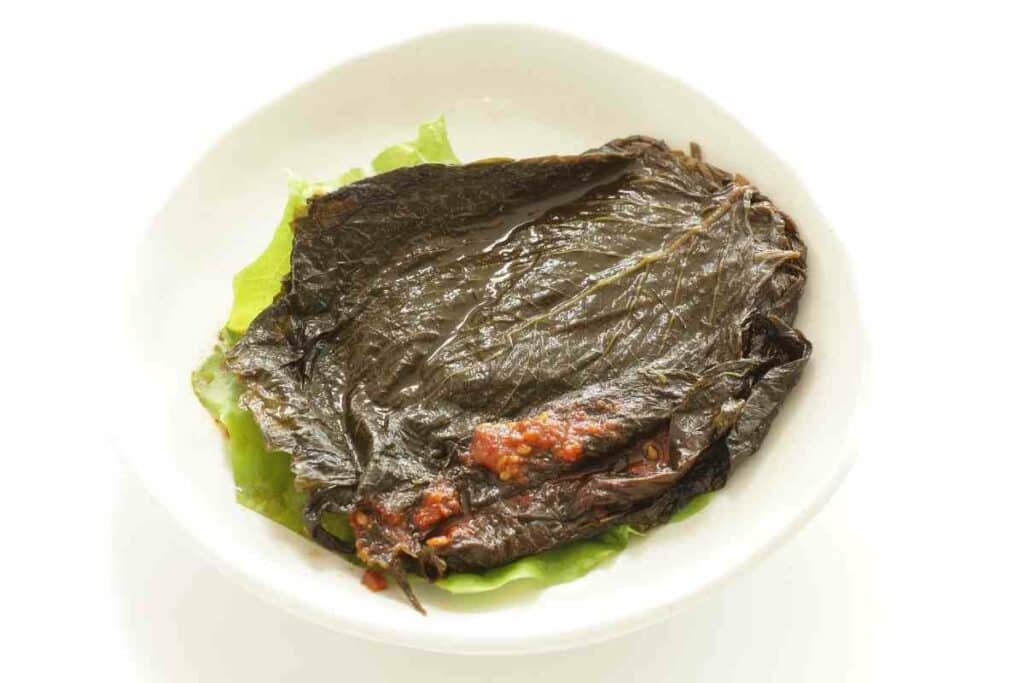
Once you have your perilla leaf harvest, you’re going to need to store it properly.
Fresh leaves will keep in the fridge for up to three days but the sooner you use them, the better the quality will be.
However, if you want to use the kkaennip recipe to marinate the leaves, this will extend their shelf life.
Propagating Perilla Leaves
The perilla seed plant is an annual self seeding plant which flowers typically in the later part of summer and into autumn.
Provided you allow this natural process to happen, you won’t need to worry about propagating the plant as it’ll do everything for you.
However, it is possible to harvest the seeds if you want to grow further plants but you could wait until the flowers are just about to go to seed.
You can then allow them to dry out and wait for them to turn brown.
At This Point – You can simply shake out the seeds and store them in a paper bag.
However, since the seeds are vulnerable, it’s important to make sure that you store them in a cool dry place if you want them to be ready to plant the next year.
Diseases And Pests To Be Aware Of
A good thing about perilla seed plants is that they aren’t usually prone to problems with pests.

But of course, there may be a few bugs around that want to get their hands on your precious leaves. Aphids are usually the most problematic and you will find them on the underside of the leaves.
These tiny bugs will deposit honeydew which is known to spoil the leaves and can lead to sooty mold growth.
Once this happens, it can quickly spread over the entire plant.
But using predators such as lacewings and ladybugs can be effective in controlling aphid populations.
You might also notice that your plant suffers with spider mite attacks.
These small creatures will feed on the juice in the leaves of your plant which leads to white spots. After this, you won’t be able to use the leaves so it’s important to get rid of the mites. The best way to do this is to simply spray them off with water.
Finally, you might notice issues with cutworms which are especially problematic for seedlings as they will cut the stalks in two.
By Collaring the Plant – You will be able to keep cutworms away but you should also make sure to maintain excellent weed control as cutworms thrive in areas like this and lay their eggs in weeds.
Where diseases are concerned, the biggest issue for Korean perilla leaves are fungal infections.
One such disease is known as damping off which is the result of a fungus that stops the seeds from germinating.
If the plant suffers from this disease when it is a seedling, you’ll find that it suddenly wilts and dies.
Damping off is typically caused by too much nitrogen or too wet soil so don’t go mad with water and fertlizer.
You might notice gray patches on the undersides of the perilla leaves and this is likely downy mildew.
Another condition caused by too much moisture only this time on the leaves. To avoid this, we would suggest making sure that your plants are well spaced.
Finally, the Korean perilla seed plant may develop rusty looking patches as a result of several types of fungal infection.
This often affects the stems and the leaves but can be treated by removing the plant and relocating it.
Conclusion
Korean perilla leaves are a must in the experimental kitchen but since they are native to Asia, it’s often difficult to get them in the USA.
But not to worry, you can buy the seeds and grow your own Korean perilla leaves giving you a constant harvest of these fresh, mint family leaves.
